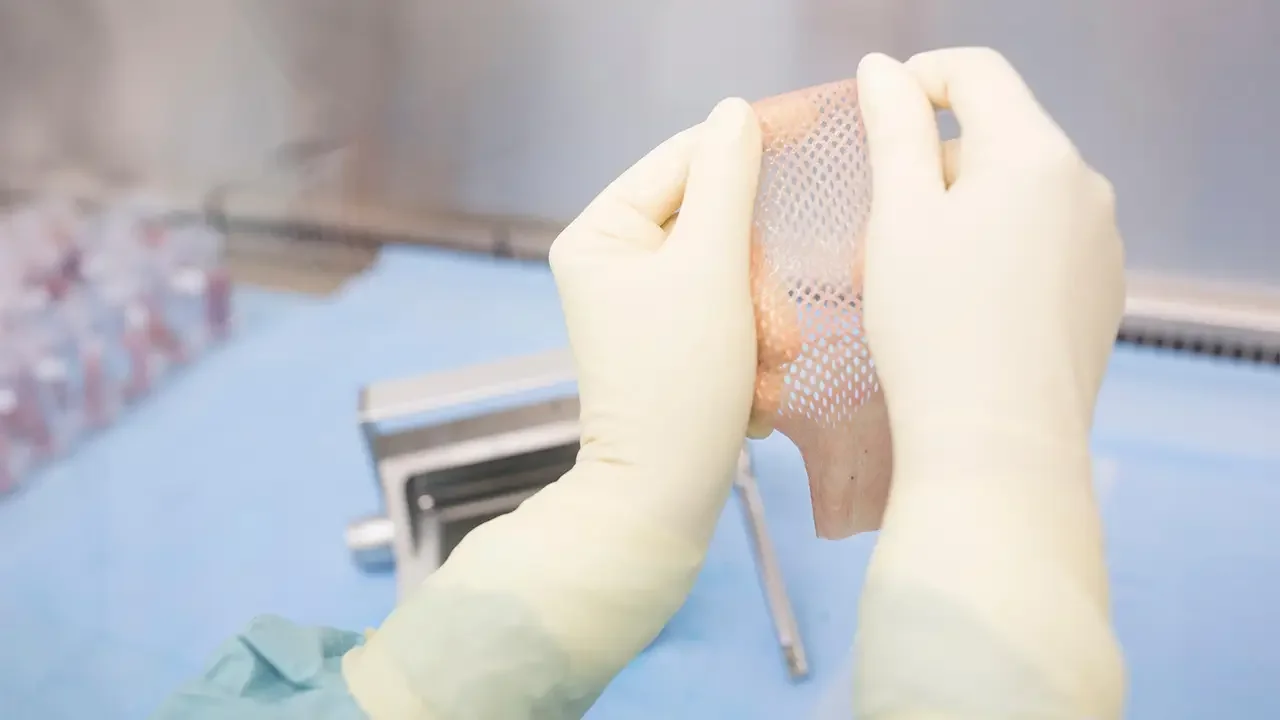
Skin Substitute Regeneration / Skin Grafting
Chronic or non-healing wounds on the feet and ankles can be painful, dangerous, and difficult to treat. Skin substitute regeneration, sometimes referred to as skin graft therapy, is an advanced wound care treatment that helps promote faster healing, lowers the risk of infection, and reduces the chance of complications
Skin substitute regeneration uses bioengineered skin grafts, made from natural or synthetic materials, to cover a wound and stimulate healing.
These substitutes mimic human skin and work by:
Providing a barrier against infection
Balancing moisture at the wound site
Encouraging healthy tissue growth
Supporting faster, more complete healing
Unlike traditional grafts that require using your own skin, bioengineered substitutes are less invasive and highly effective for complex wounds that have not responded to standard wound care.
What Is Skin Substitute Regeneration?
Benefits of Skin Substitute Therapy
✔️ Accelerates healing for chronic wounds and diabetic ulcers
✔️ Reduces infection risk by shielding exposed tissue
✔️ Promotes new skin growth to close wounds faster
✔️ Minimizes scarring with more even tissue repair
✔️ Lowers amputation risk by treating wounds before they worsen
Skin Substitute Treatment Process
STEP 1: COMPREHENSIVE WOUND EVALUATION
We start with a thorough exam of your wound assessing depth, size, infection risk, and circulation to choose the best skin substitute for your needs.
STEP 2: PREPARING AND APPLYING THE SKIN GRAFT
Dead or infected tissue is carefully removed (debridement)
The graft is applied to cover the wound and protect it
Specialized dressings hold the graft in place and maintain proper healing conditions
STEP 3: ONGOING CARE AND MONITORING
We schedule follow-up visits to track healing, prevent infection, and determine if additional treatments, such as negative pressure wound therapy (wound vac) or repeat graft applications are needed.
Frequently Asked Questions About Skin Substitutes
-
Diabetic foot ulcers
Chronic wounds that don’t heal with standard care
Surgical wounds
Traumatic injuries
Pressure ulcers (bedsores)
-
Many insurance plans, including Medicare, may cover skin substitute therapy if it’s deemed medically necessary for non-healing wounds. At Solevanna Foot & Ankle, we’ll review your coverage and provide clear pricing information before treatment.
-
Risks are rare but may include infection, rejection of the graft, or delayed healing. Regular monitoring helps prevent and address complications early.
-
Healing times vary based on wound size, depth, circulation, and overall health. Some patients notice improvement within a few weeks, while more complex wounds may take several months to fully heal. Regular follow-up visits ensure the graft is working properly.
Disclaimer: The information on this website is for educational purposes only and should not replace professional medical advice, diagnosis, or treatment. Always consult your doctor with any questions about your health.